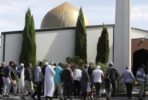The world was shocked by the recent brutal attack on tourists on a Tunisian beach. But the story of the killer, and his progression from young football fan to gun-wielding jihadi, is raising alarm in intelligence circles.
The odd thing about Seifeddine Rezgui, said Mr Fadi Saidi, a computer science student at Tunisia’s Kairouan University, was that he was always one of the least extreme of the radicals. “What changed Seif Rezgui? We don’t know,” said Mr Saidi, who knew the 23-year-old as an undistinguished face among the growing crowd of noisy Salafists, with their literalist interpretation of the Quran, and jihadi sympathisers with whom he and other secularists routinely clashed on campus.
Rezgui’s rampage on June 26, on a beach near Sousse, left 38 dead in what was the deadliest Islamist terror attack on Europeans since the London subway bombings in 2005.
More than anything, the bloodshed brought home the reach and power of the Islamic State of Iraq and Syria (ISIS), in whose name Rezgui murdered. The ability of the group, which controls large swathes of Iraq and Syria, to motivate a breakdancing, football-loving young man to commit mass murder, and in so doing lose his own life, has magnified the threat of what used to be called “lone wolf” terrorism — where individuals take it upon themselves to perpetrate acts of political violence.
Lone wolf attacks are not new, but the rise of ISIS has changed their nature. The perpetrators are no longer just isolated loners. The pull of the jihadi message that incites them is stronger than ever. Many governments now recognise that the toolkit of counterterrorism developed in fighting Al Qaeda is no longer enough: A major change in approach is required. In the United Kingdom, spymasters are considering the biggest shift in their approach to counterterrorism in a decade.
“Rezgui was living in this shaabi (poor) neighbourhood called Al Minshiya. It’s massive, maybe almost 100,000 people live there,” said Mr Saidi. “In those kind of areas there are no youth clubs, no cultural activities, no sports. There’s barely even any infrastructure. There’s nothing. All you have is the mosques.”
Tunisia is riven by the attack. Three months since 21 were gunned down at the Bardo Museum in Tunis, the country’s hard-won reputation as a beacon of stability and democracy following the Arab Spring has been shattered.
In some ways, it should not come as a surprise. More Tunisians — an estimated 3,000 — have flocked to swell the ranks beneath ISIS’ black banners than any other nationality. In Kairouan, students pull out smartphones to reveal pictures of classmates posing with AK-47s in Syria.
There is an abundance of reasons given for the turn of so many of Tunisia’s citizens towards jihad. The shaabi neighbourhoods are full of Salafist preachers; crime and drug use are high; the chance of a better future for thousands of young men is not. Hotbeds of Islamism abut glittering tourist resorts. El Sfaya, a ramshackle slum of potholed roads and unadorned concrete block apartments, is a stone’s throw from the beach where Rezgui found his victims.
Tunisia’s plight is far from unique. Across the Arab world, Europe, North America and elsewhere, counterterror chiefs fret about the new face of terrorism — attacks that do not need direction, do not need plotting and planning, and do not need great resources.
“After what has happened in Canada, Australia, Denmark and France recently, it seems clear that you don’t need any more to go to Syria to become a terrorist,” said Mr Jacob Rosen, a veteran Israeli diplomat and now senior counsellor at Israel’s Foreign Affairs Ministry.
“You have a critical mass domestically in so many countries in the Arab world and beyond — you don’t need to travel anywhere to get radicalised.”
The rise of ISIS has been transformative. Its powerful narrative of redemption has turned the idea of “lone wolf” terrorism into a far more deadly hybrid that motivates a much bigger demographic into action. Under fire from an international coalition in its self-proclaimed caliphate across northern Iraq and Syria, it has sought to export its violence ever further abroad.
The Sousse attacks came only days after Abu Mohammad Al Adnani, ISIS’ spokesman, exhorted followers to “expose” themselves to martyrdom and bring “disaster to the apostates”.
NEW TACTICS
For Western intelligence agencies well-schooled in the fight against Al Qaeda, this shift from hard networks as the vehicles of terror to a movement characterised by charismatic influence is a huge problem. “ISIS’ rise has changed matters a great deal,” said one of Europe’s most senior intelligence officials. “Al Qaeda was about quality. ISIS is about quantity. And we do not have the tools to easily deal with it.”
Spies across Europe are stretched in dealing with existing networks of hardcore radicals in their own backyards, let alone having now to consider those in other countries. Their investigations have relied on complex processes of triage to whittle down likely suspects to identify the key players at the centre of jihadi groups.
But as in Tunisia — and the Jewish museum murders in Brussels, the Ottawa Parliament attack, the Charlie Hebdo killings in Paris and the Copenhagen cafe shooting — it is individuals on the periphery of known networks who were the perpetrators. Rezgui, who is said to have trained in Libya for the attack, never featured on the security radar in Tunisia.
That periphery is not only hard to monitor for legal reasons — warrants for government snooping in much of Europe depend on evidence about who individuals are associating with and why, rather than what they believe — but it is also far larger than the existing groups being monitored. In the UK, for example, the domestic security agency MI5 currently has 3,000 “subjects of interest” on its databases. The agency employs only 5,000 people.
One senior British counterterrorism official compares it to Brownian motion — the phenomenon of particles in a fluid bouncing around, seemingly at random. “We have to track all of these particles, moving around in ways we cannot necessarily predict … some particles are connected, others are just floating around.”
According to the EU’s counterterrorism chief, Mr Gilles de Kerchove: “The nature of an organisation is that it is constructed. It leaves traces of links that can be crossed by investigations. But with individuals, they may get their ideas from Dabiq or Inspire (ISIS’ and Al Qaeda’s online magazines, respectively) or the Internet, or their peers … but you do not necessarily know how or when.”
In response, officials are now focused on trying to develop “counter-narrative” strategies online and in communities to try and disrupt the lure of ISIS’ own story. But such efforts remain piecemeal and are often clunky.
EXTREMISM’S ALLURE
In developing policies to eradicate the ISIS narrative, the real key might come in asking why its allure has so suddenly exploded. “We have had a sustained (jihadi) fever. The tensions are so high. The imagery and the rhetoric is like nothing before,” said Mr Patrick Skinner, a former Central Intelligence Agency counterterrorism official and now director of special projects at Soufan Group.
“The combination of ubiquitous social media and these non-stop conflicts is stoking a very different environment for extremism in Europe and the West … All the conditions are right for this big change in what lone wolf attacks are and mean.”
ISIS’ skill in information warfare and its use of social media have made a huge difference to the pull of its message. Its physical caliphate itself is, of course, one of the group’s most emotionally resonant concepts. Unlike Al Qaeda, whose leaders led a covert and small network from shadows and caves, ISIS has proclaimed its enduring presence as a physical state. Even the most wilful potential recruits for Al Qaeda struggled to find the network. In the case of ISIS, it is impossible to miss it. As such, for radical young Muslims drawn to extremes, it is much easier to take up the cause.
Shattering that allure will ultimately require a physical effort as well as a conceptual one, said one senior military official in the anti-ISIS coalition. ISIS needs to suffer defeats to break its primacy in the minds of radicals, he said. In practice, however, the military campaign against ISIS — nearly one year old — has barely contained the group, let alone humiliated it.
The problem may be yet broader. The slums of Tunisia are not unique as nurseries for crime and producing disillusioned young men and women. The ISIS message has found a home in almost any place where such social structural problems are evident among Muslim communities, be they in London’s East End, Paris’ banlieues or the ethnically segregated villages of the Balkans.
“We can save people from this,” said Mr Saidi. “But it requires support for civil society and studying the situation to understand the main problems. It isn’t about sending a couple of mukhabarat (spies) into the hotels and mosques.”
Ironically, the crackdown — which saw dozens of unofficial Tunisian mosques closed in the aftermath of the attack — is in many cases making matters worse. “The harassment is pushing us,” said Mr Waleed, a Salafi truck driver in Tunisia.
“I was someone who was much more moderate before, but now I am really angry. The only solution is a second revolution — and let it be more than the last one. Let it be like Syria, if it has to be.” THE FINANCIAL TIMES
ABOUT THE AUTHORS:
Sam Jones is defence and security editor at The Financial Times and Erika Solomon is the newspaper’s Middle East correspondent.
Source: www.todayonline.com







